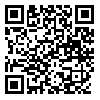دوره 25، شماره 3 - ( 7-1400 )
جلد 25 شماره 3 صفحات 103-98 |
برگشت به فهرست نسخه ها
Download citation:
BibTeX | RIS | EndNote | Medlars | ProCite | Reference Manager | RefWorks
Send citation to:



BibTeX | RIS | EndNote | Medlars | ProCite | Reference Manager | RefWorks
Send citation to:
Badaye A, Vaziri S, Lotfi Kashani F. Developing a Psychosomatic Symptoms Model based on Emotional Regulation, Defense Mechanisms, and Attachment Styles Mediated by Distress Level in psychosomatic Patients. Hormozgan Medical Journal 2021; 25 (3) :98-103
URL: http://hmj.hums.ac.ir/article-1-1119-fa.html
URL: http://hmj.hums.ac.ir/article-1-1119-fa.html
Badaye Asghar، Vaziri Shahram، Lotfi Kashani Farah. Developing a Psychosomatic Symptoms Model based on Emotional Regulation, Defense Mechanisms, and Attachment Styles Mediated by Distress Level in psychosomatic Patients. مجله پزشکی هرمزگان. 1400; 25 (3) :98-103
چکیده: (96 مشاهده)
Background: Considering the important role of anxiety in people with psychosomatic disorders, recognizing their defense mechanisms, emotion regulation techniques, and attachment styles can help support them against anxiety and stress. The aim of this study was to develop a psychosomatic symptoms model based on emotional regulation, defense mechanisms, and attachment styles mediated by distress level. Methods: In this descriptive correlational study using path analysis, 540 patients diagnosed with psychosomatic disorder using the Physical Health Questionnaire (PHQ15), were selected through purposive sampling among all medical centers in Tehran, Iran, during 2019. Then, they completed the short form of Cognitive Emotion Regulation Questionnaire, Adult Attachment Styles Questionnaire, Defense Styles Questionnaire, and Kessler Psychological distress Assessment Scale (Kessler, 2002). AMOS.22 and SPSS.22 software was used for data analysis. Results: The indirect effect of anxious attachment (P<0.001), ambivalent attachment (P=0.048), immature defense mechanism (P<0.001), and neurotic defense mechanism (P<0.001) were confirmed to psychosomatic symptoms mediated by low distress. Also, the indirect effect of anxious attachment (P<0.001), mature defense mechanism (P=0.045), immature (P<0.001), and neurotic (P<0.001) correlated with psychosomatic symptoms mediated by high distress. Conclusion: Considering distress tolerance as a moderating mechanism, there was a relationship between ambivalent and anxious attachment styles, and neurotic and immature defense mechanisms with psychosomatic symptoms.
واژههای کلیدی: Emotional regulation، Psychological distress، Somatoform disorders، Anxiety disorders
| بازنشر اطلاعات | |
 |
این مقاله تحت شرایط Creative Commons Attribution-NonCommercial 4.0 International License قابل بازنشر است. |






